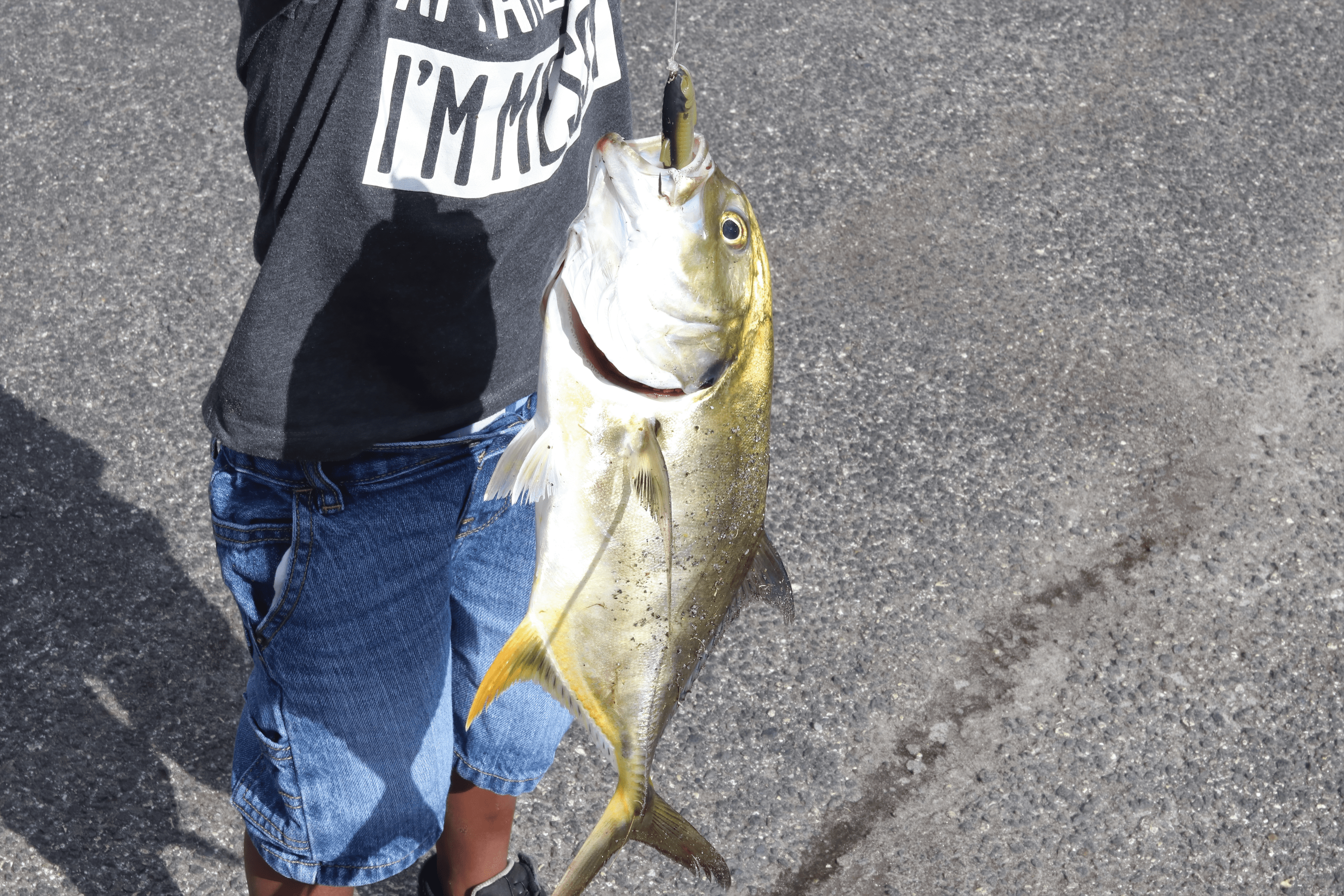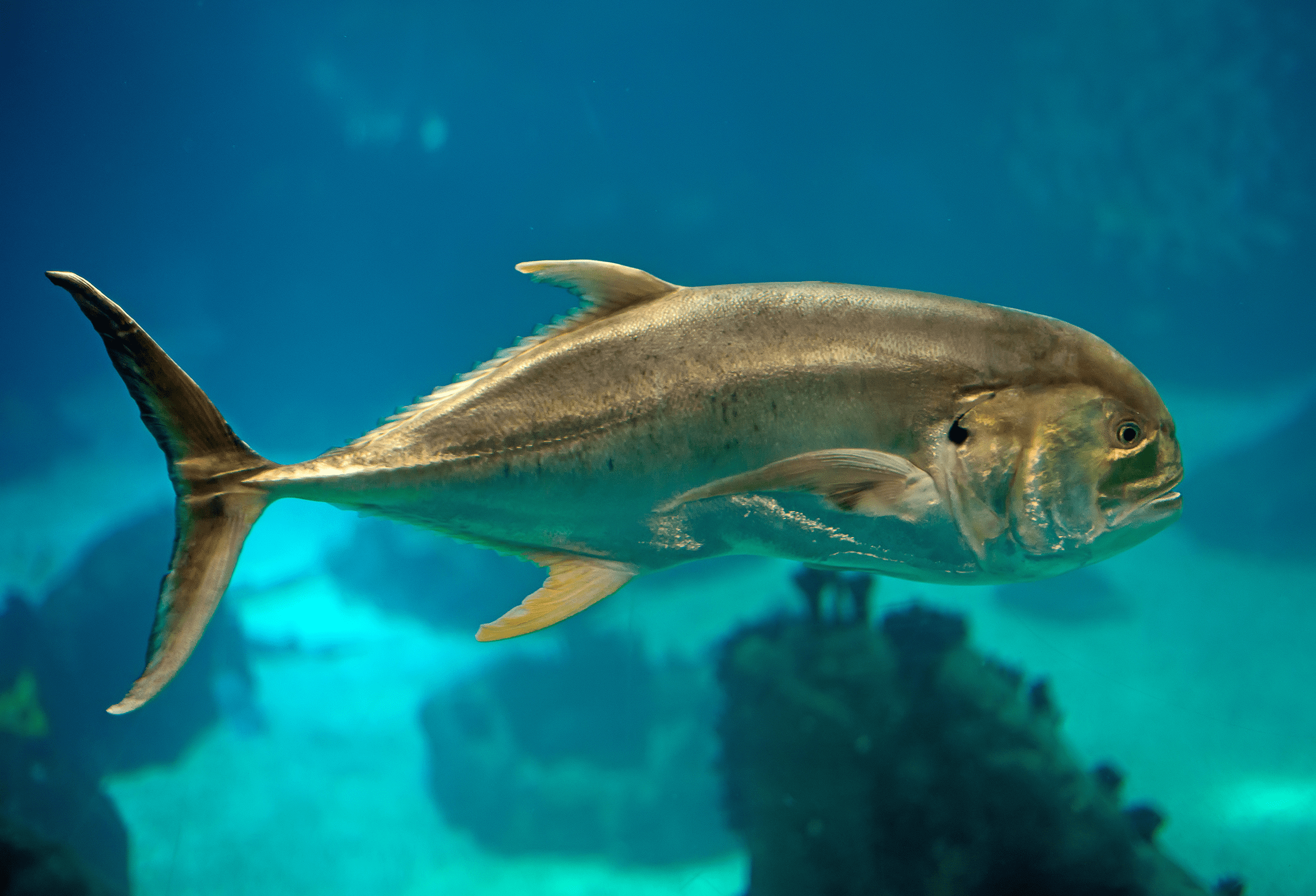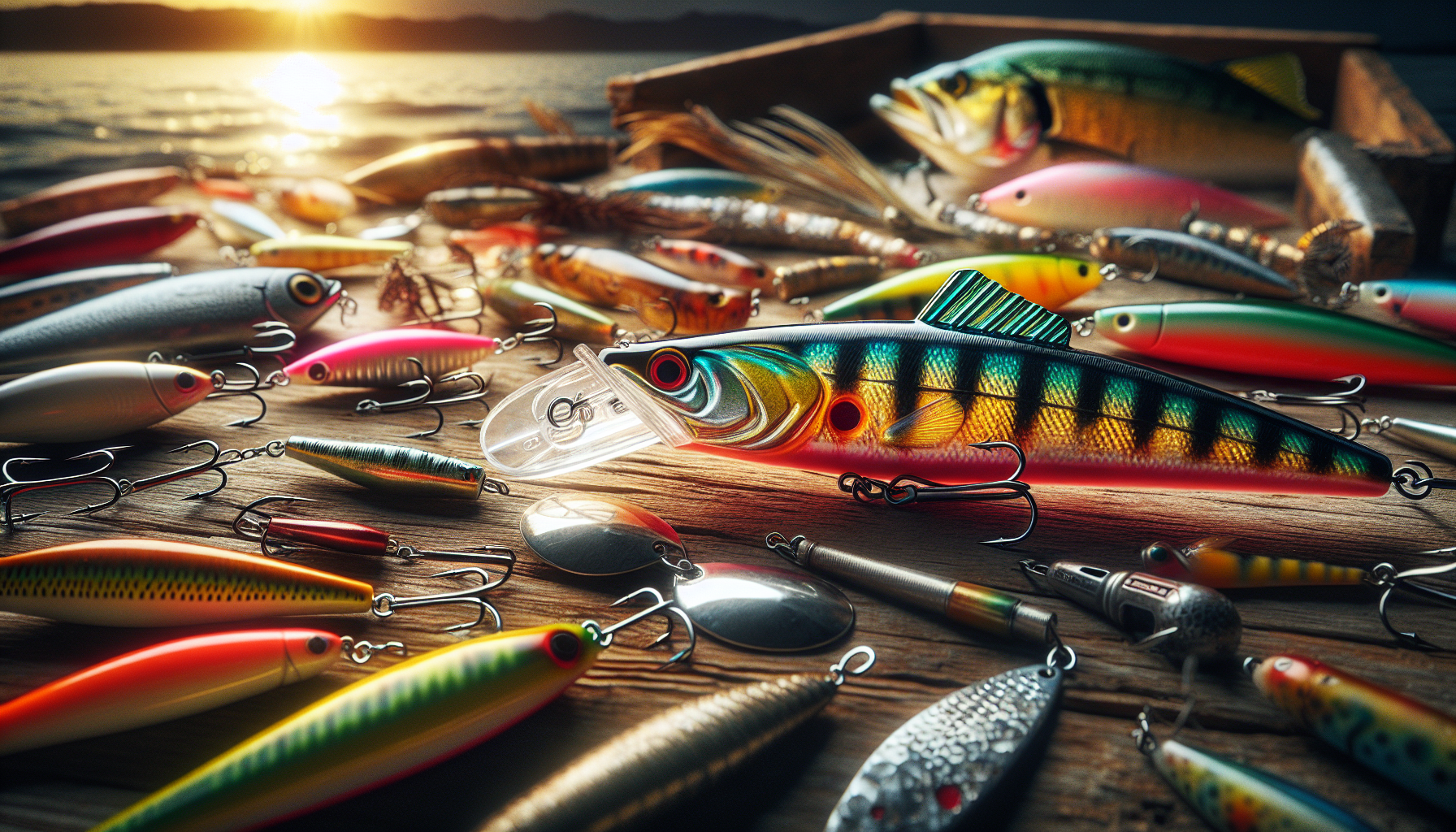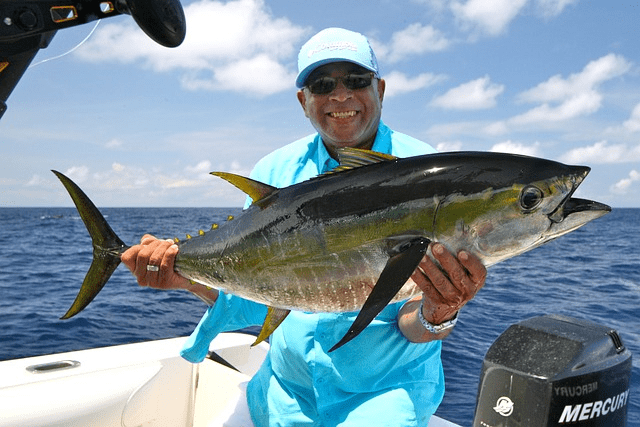Mastering Jack Crevalle Fishing in Florida: Essential Tips for Anglers
If you’re pursuing the thrill of Jack Crevalle fishing in Florida, knowing where to cast your line and what tackle to use can be the difference between a good story and a great catch. From the rugged inlets to the depths around Gulf rigs, we provide the definitive tips and tricks for capturing this energetic quarry.
Key Takeaways
- Florida offers diverse environments for Jack Crevalle fishing, including coastal canals, nearshore beaches, and Gulf rigs, each requiring specific strategies and tackle.
- Proper gear is essential for Jack Crevalle fishing, with heavy-duty tackle designed to withstand their strength, including 4000-6000 size reels, 30-40 lb braid line, and quality hooks and lures.
- Effective Jack Crevalle fishing techniques vary from using artificial lures that mimic prey behavior to live bait fishing with natural prey and fly fishing with well-presented flies for a visual and tactile experience.
Jack Crevalle Fishing in Florida: Prime Locations

Anglers along the Florida coastline have abundant opportunities to catch Jack Crevalle, given the diverse array of hotspots spanning the network of rivers and canals inland to the lively shorelines and out into the deep sea near Gulf rigs. Mastering Jack Crevalle fishing techniques specific to each habitat is key in this challenging endeavor, setting up a captivating battle between fisher and fish for a triumphant catch.
Coastal Canals and Rivers

In the coastal inshore waters, Jack Crevalle or “canal tuna” roam avidly in pursuit of baitfish.
As these big Jacks scour areas around docks and mangroves for their next meal, daylight reveals their silvery gleams during this intense chase.
Experienced anglers entice these robust fish using live mullet or opting for sizable spoons, jigs, and jerk baits cast strategically near structures where jacks are known to ambush prey.
The successful angler must leverage the surrounding environment to present bait that proves irresistible to these opportunistic predators.
Nearshore Beach Fishing

Just off nearby beaches offer a thrilling opportunity for sight fishing adventures targeting Jack Crevalle. Anglers perched on boats with specialized towers can witness formidable gatherings of Jacks numbering in the hundreds, their dorsal fins slicing through the surface waters, often described as boiling water, form an impressive display of power and coordination.
It acts as a beacon to fishermen looking to engage. Often, smaller contingents within these schools consist of particularly large fish, setting up what becomes a pursuit for landing some sizable Jacks.
Employing live bait or artificial lures into this whirlwind activity can provoke incredibly forceful strikes that turn any serene day spent casting lines into one charged with adrenaline-pumping excitement.
Gulf Rigs
Gulf rigs, acting as beacons in the vast open waters, drawing schools of Jack Crevalle by providing plentiful baitfish.
These sites become prime locations for anglers equipped with robust tackle and durable hooks and lures capable of enduring the tough fights characteristic of these potent fish.
In the rig’s shadows, Crevalle Jack aggressively pursue their prey seeking sanctuary among these structures. Catching a Jack requires gear resilient enough to withstand such intense encounters – only then can one hope to match the power play present around these industrial monoliths.
Essential Tackle and Gear for Jack Crevalle Fishing

To effectively catch a Jack Crevalle, an angler needs appropriate equipment capable of handling the vigorous pulls and tenacious battles this spirited fish is known for. This includes robust reels, durable lines, and superior hooks and lures—essential components in any fisherman’s toolkit that guarantee readiness when it’s time to reel in this hardy catch.
Heavy Rods, Reels and Line
When targeting this powerhouse, reel size is critical.
Opt for reels within the 4000-6000 range to guarantee ample line capacity and drag power to match Jacks’ infamous surging runs.
When fishing big jacks, a 7′ foot medium to medium-heavy rod is suitable in most circumstances.
Coupling these reels with a braid of 30-40 lb gives you the muscle needed to turn what could be an intense battle into a victorious catch.
The intensity rises as anglers take on big Jacks, where most stress is felt along the line. A sturdy line does more than just maintain your link with these formidable fish. It encourages you to throw heavier lures accurately, making every strike a potential memory-making capture.
Quality Hooks and Lures
Use the right hooks to ensure you’re fully equipped to catch that prize Jack Crevalle. Your arsenal should include:
Robust jig and grub combinations designed to withstand vigorous fights. A few favorites are:
- Spro Bucktail jigs (White)
- Gulp Jerk Shad (white, or green)
- Surface lures such as the Rapala Skitter Walk are renowned for stirring up enough surface action to capture a jack’s attention.
- Jerkbaits are expertly crafted to imitate struggling prey, ideal for provoking Jacks into striking fiercely. A favorite among fishing experts is the Rapala X-Rap. Typically, light colors work better for Jack Crevalle.
- The Acme Kastmaster spoon is an excellent choice that adds versatility to your tackle box. Whether you are casting it deep into open waters or dragging it through the surf zone, its glow and tremors are irresistible to any nearby Jacks.
The significance of hook size cannot be overstated. Typically, size 2/0 to 5/0 hooks are recommended for Jack Crevalle, depending on the size of the bait used and the size of the fish targeted.
These hook sizes offer a good balance between being large enough to handle the powerful bite of a Jack Crevalle and small enough to be effectively concealed within the bait.
When using artificial lures, treble hooks of size 1/0 to 2/0 are commonly used to ensure a secure hook-up when a Jack strikes with ferocious power.
Circle hooks in this size range (2/0 – 5/0) are also a popular choice for live bait fishing, as they facilitate easier catch-and-release with less harm to the fish, enhancing the sustainability of the sport.
Effective Techniques for Catching Jack Crevalle
Capturing a Jack Crevalle requires both tactical expertise and natural intuition. It could be the meticulous approach of throwing out artificial lures, employing the irresistible temptation of live bait, or mastering the delicate art of fly fishing—every tactic presents its own avenue to triumph.
Recognizing the optimal moment and technique for these methods can enhance your fishing prowess, leading you to an encounter with the formidable Jack.
Artificial Lures

Any angler’s arsenal should include artificial lures and the proper reeling techniques to present the lures appropriately. The commotion created by topwater plugs mimics the sound of struggling prey, which can trigger an aggressive response from jacks as they soar out of the water.
Jerkbaits
When fishing jerkbaits it is important to implement a reel and jerk technique, jerking the rod slightly every two to three reels, keep the rod tip down through the motion and pull in the opposite direction of the lure. A jerkbait like the Rapala X-Rap entices with its stop-and-go motion that imitates a wounded fish, often too tempting for a jack to pass up.
Spoons and Jigs
Metallic spoons and furry bucktail jigs simulate authentic movements in the water, flashing signals irresistible to these predators. With spoons, it’s important to reel consistently with a few jerking motions through the retrieval. Bucktail jigs should be fished similarly to jerkbaits when casting but slower to ensure the bait travels lower in the water column.
These types of lures enable anglers to explore large swaths of water effectively and coax Jacks into striking even when they aren’t actively hunting on the surface. It is all about seduction. Selecting just the right lure could be pivotal in achieving success.
Live Bait Fishing

Utilizing the natural prey of a predator often proves to be an excellent tactic in angling.
Employing live bait such as:
- Scaled Sardines
- Threadfin Herring
- Finger Mullet
- Blue Runners
- Shrimp
- Pinfish
Can significantly increase the likelihood of attracting Jack Crevalle.
When fishing in shallow areas, deploying live shrimp beneath a bobber might trigger the predatory response of a Jack, whereas opting for free-lining with a split shot in deeper regions allows the bait to mimic natural movements.
The twitching motion of pinfish or swift movement of finger mullet taps into the innate hunting instincts of Jack Crevalle, thus providing fishermen with the opportunity to engage with and observe these fish’s fierce power and aggressive behavior during their pursuit.
Fly Fishing for Jack Crevalle
Anglers in search of a dynamic and engaging fishing experience will find fly fishing for Jack Crevalle to be a heart-pounding pursuit.
Employing a 9wt outfit strikes an ideal compromise, delivering sufficient heft while maintaining the delicacy required for casting enticing flies such as the Clouser Deep Minnow—especially effective in chartreuse over white—to simulate the look of baitfish that jacks can’t resist.
As you work your line across the undulating inshore waters or send it flying over the breakers into the surf, selecting an appropriate fly is important to allow it to drift provocatively through different depths, appealing directly to the hunting impulses of these aggressive predators.
There is no greater adrenaline rush than witnessing a Jack launch an aerial assault on your expertly presented lure.
Handling and Releasing Jack Crevalle Safely
The excitement of catching a Jack Crevalle is undeniable, but it’s crucial for anglers to prioritize the fish’s health and safety during release. These robust and energetic members of the Jack family merit careful handling to ensure they can continue thriving in their oceanic habitat after an angler’s successful catch.
Handling Tips
Managing a Jack Crevalle requires acknowledging their strength and taking precautions for personal safety. Follow these guidelines:
- Before laying the fish on the boat’s gunwale, moisten it to prevent loss of mucus.
- Refrain from using towels or any fabric that might harm their protective coating.
- When hoisting the fish for a picture, cradle its belly to prevent harming its internal organs.
Employing a dehooking instrument is considerate towards both the Jack Crevalle and safer for you as an angler. It facilitates swift removal of hooks while minimizing injury risks associated with the fish’s pointed spines and potent bite. The aim should always be to release back into the wild a vigorous Jack. Hence, every measure from when they first strike your hook until they are let go must prioritize their health.
Releasing Techniques
Releasing a Jack Crevalle requires as much finesse as hooking one does.
Initiate the revival by carefully swaying the fish in a back-and-forth motion in the water, ensuring its gills are well-flushed with oxygenated water. This resuscitation step is essential, particularly after an intense struggle, to aid the fish’s recovery and ensure it departs vigorously.
To lessen stress on the Jack and enhance survival prospects post-release, keep its time out of water under fifteen seconds. Cradle it gently beneath its belly while releasing, observing how it slowly recuperates strength before returning to battle once again.
A conscientiously executed release reflects deep respect from a dedicated angler towards these highly aggressive and hardest-fighting marine creatures—the true measure of reverence for their relentless nature.
Summary
As we reel in our journey through the electrifying world of Jack Crevalle fishing in Florida, we’ve navigated the prime locations, equipped ourselves with the best tackle and gear, mastered the most effective techniques, and learned the importance of safe handling and release. Each step has been a cast towards understanding the exhilarating dance with these powerful fish.
May the knowledge shared here help in guiding your next fishing adventure to success. Remember, the waters are waiting, and the Jack Crevalle are ready for the challenge. So set sail with anticipation, and let the thrill of the chase lead you to your next big catch.
Frequently Asked Questions
Where is the best place to catch Jack Crevalle?
The optimal locations to catch Jack Crevalle include prominent inlets, offshore shipwrecks and reefs, expansive bays, canals, as well as close to seawalls where they commonly herd their prey.
Enjoy your fishing adventures!
How do you catch Jack Crevalle in Florida?
In Florida, when aiming to catch Jack Crevalle, it’s most effective to employ robust live baits such as mullet, herring or pilchards (sardines), for these baitfish prove irresistible to the energetic Jack.
Can you eat Crevalle Jack in Florida?

Yes, you can eat Crevalle Jack in Florida – they are not bad to eat. Many people consume them, and they are found in warmer parts of the oceans. Prepared correctly, some say they can make great table fare; however, most consider their food value to be low.
What is the best bait for Jack Crevalle?
Nothing works better than using big live baits to entice a Jack Crevalle. Favorites among these are mullet, herring, and pilchards (also known as sardines). The vibrant action of baitfish is irresistible to the Jack.
What are the best locations for Jack Crevalle fishing in Florida?
In Florida, optimal spots to engage in Jack Crevalle fishing are found across various settings such as the coastal canals and rivers, along the shores of beaches, and around Gulf oil rigs. Each location provides a distinct habitat that suits these robust fish.







